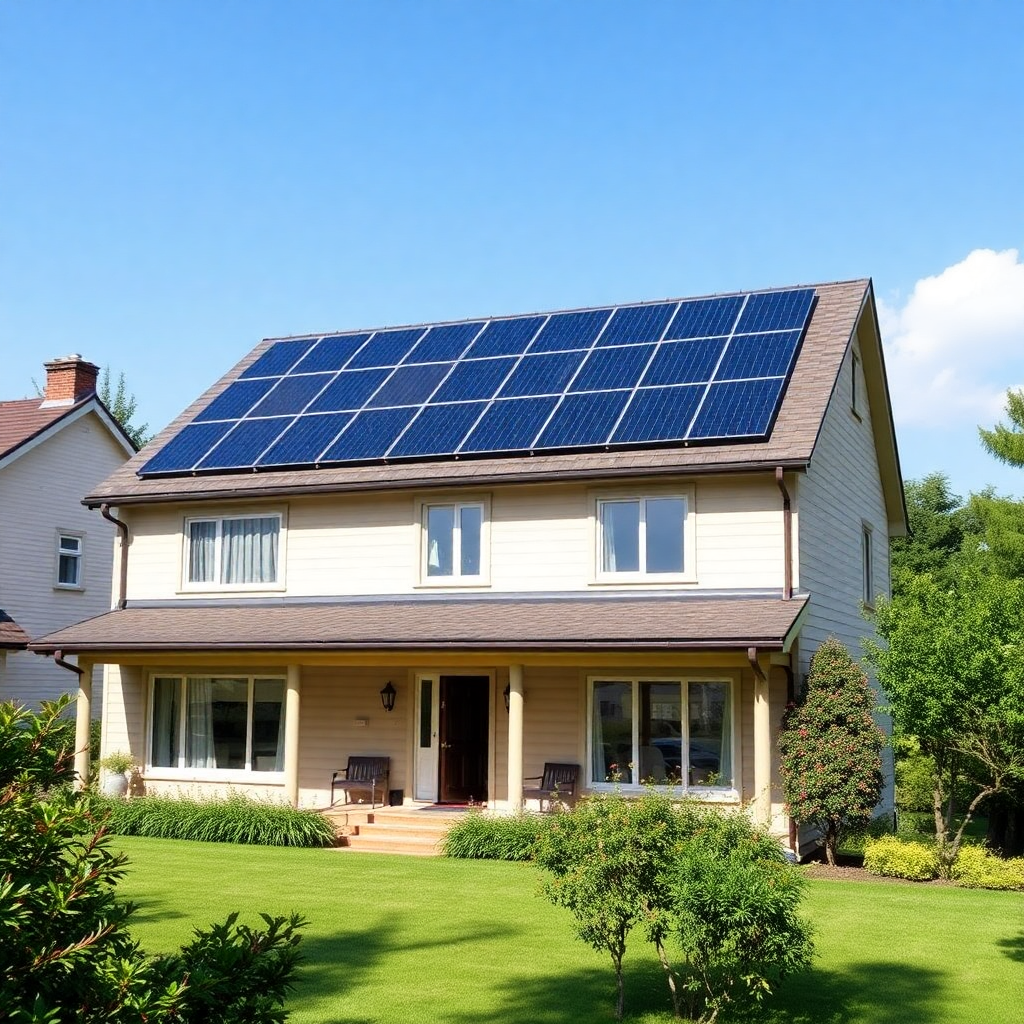Key Considerations for Solar Panel Integration in Smart Sports Energy Systems
Architectural and Functional Integration for Optimal Performance
The successful deployment of solar panels in smart sports facilities hinges on seamless architectural integration and functional alignment with energy demands. For large-scale venues like stadiums, panels should be installed on roofs, façades, or surrounding structures with optimal sun exposure. The 2022 Winter Olympics’ “Ice Ribbon” Arena in Beijing demonstrated this by incorporating 1,958 photovoltaic panels on its roof, generating 400,000 kWh annually to power lighting and HVAC systems. Similarly, outdoor sports complexes in coastal or mountainous regions can leverage wind-solar hybrid systems, combining panels with small-scale wind turbines to offset intermittent solar output.
Structural durability is critical. Panels must withstand extreme weather, including 120 km/h winds and hailstones up to 25 mm in diameter, as mandated by IEC 61215 standards. For example, a football stadium in Germany adopted triple-junction solar cells with 24% efficiency, paired with self-cleaning nano-coatings to maintain 98% light transmittance in desert-like conditions. In earthquake-prone areas, flexible thin-film panels with 0.3 mm thickness can absorb vibrations, reducing fracture risks by 60% compared to rigid crystalline silicon modules.
Energy Storage and Grid Interaction Strategies
Smart sports facilities require robust energy storage to balance solar generation with dynamic consumption patterns. Lithium-ion batteries with 4–6 hour discharge cycles are ideal for daytime peak shaving, while flow batteries with 20-year lifespans suit long-duration storage in remote training bases. A case in point is Peru’s Machu Picchu Sports Complex, which uses vanadium redox flow batteries to store excess solar energy for nighttime operations, cutting diesel generator use by 85%.
Grid-connected systems demand advanced inverters with reactive power compensation to stabilize voltage fluctuations. In Paris’ Stade de France, smart inverters reduced harmonic distortion by 60%, ensuring uninterrupted power for scoreboard displays and emergency lighting during matches. Microgrid architectures enable energy independence for island communities—Greece’s Santorini Island Sports Center pairs solar arrays with hydrogen fuel cells, achieving 99.9% uptime for its Olympic-sized swimming pool and gymnasium.
Demand response programs further optimize efficiency. A basketball arena in California participated in a utility incentive program, shifting HVAC operation to solar peak hours and earning $0.50/kWh for reducing grid load during evening games. Time-of-use tariffs in the UK incentivized a London tennis club to install smart thermostats, cutting electricity bills by 30% by pre-cooling courts during solar generation windows.
Digital Energy Management for Enhanced User Experience
IoT-enabled monitoring systems are pivotal for real-time energy optimization. In Singapore’s Sports Hub, AI-powered sensors adjust lighting intensity based on occupancy and natural light, reducing consumption by 47% without compromising visibility. Blockchain technology enhances transparency in energy trading—South Korea’s Songdo Smart City tracks solar credits from 12,000 rooftop installations on a distributed ledger, ensuring equitable revenue distribution among facility operators and local authorities.
For athlete training, kinetic energy recovery systems (KERS) convert motion into electricity. A cycling track in the Netherlands installed piezoelectric tiles beneath its surface, generating 10 kW per hour from rider movements—enough to power scoreboards and medical stations. Similarly, a soccer academy in Brazil uses solar-charged smart balls with embedded sensors to track performance metrics, extending battery life by 300% through on-the-fly charging during drills.
Virtual reality (VR) training integrates solar-powered edge computing to reduce latency. A ski resort in Switzerland deployed solar-driven servers for its VR simulation labs, enabling real-time adjustments to slope conditions while cutting data center energy use by 75%. This approach aligns with FIFA’s sustainability goals, which mandate a 50% reduction in carbon emissions per spectator by 2030.
Maintenance and Safety Protocols for Long-Term Viability
Preventive maintenance schedules must account for climate-specific degradation. In India’s Rajasthan region, panels cleaned monthly with deionized water maintained 95% efficiency, while those cleaned quarterly saw a 15% drop due to dust accumulation. For facilities in cold climates like Canada’s Whistler, self-heating panels with embedded resistive wires prevented snow buildup, ensuring 98% annual uptime compared to 72% for conventional panels.
Electrical safety requires rigorous adherence to standards. All installations must feature insulation resistance exceeding 1 megohm to prevent漏电 (electrical leakage), as mandated by IEC 62446. Grounding systems with resistance below 10 ohms effectively divert lightning strikes, protecting panels and inverters—a requirement enforced in Japan’s Fukushima Renewable Energy Village after typhoon-related damage analysis. Regular inspection of junction boxes for moisture ingress and connector corrosion is also critical, as demonstrated in Australia’s Black Saturday bushfire aftermath, where damaged connectors caused 15% of system failures.
Fire prevention protocols include flame-retardant backsheets and arc-fault circuit interrupters (AFCIs). A 2023 study by the U.S. National Renewable Energy Laboratory found AFCIs reduced fire risks by 90% in residential solar systems by detecting and interrupting abnormal current flows. For large-scale installations, thermal imaging drones conduct monthly scans to identify hotspots, enabling repairs before efficiency losses exceed 8%.
Innovative Applications Beyond Traditional Boundaries
Emerging technologies are expanding solar’s role in sports energy systems. Photovoltaic windows, using transparent organic solar cells, are being tested in stadium VIP boxes, generating 10% efficiency while maintaining 80% transparency. A pilot project in Dubai’s Al Wasl Sports Club installed 500 m² of these windows, powering 30% of its administrative offices’ energy needs.
Solar-powered asphalt collectors, embedded in running tracks, convert heat into electricity for floodlights. France’s Wattway project demonstrated this by installing 1 km of solar roadway near a sports complex, generating 280 MWh annually—enough to power 100 homes. Similarly, a tennis court in the Netherlands uses piezoelectric and solar hybrid tiles, producing 15 kW per hour from player movements and sunlight combined.
These innovations align with global sustainability targets, such as the International Olympic Committee’s pledge to achieve carbon neutrality by 2040. By integrating solar panels with smart technologies, sports facilities can reduce operational costs by 40–60%, cut carbon emissions by 70%, and enhance user experience through uninterrupted, eco-friendly energy supply.


